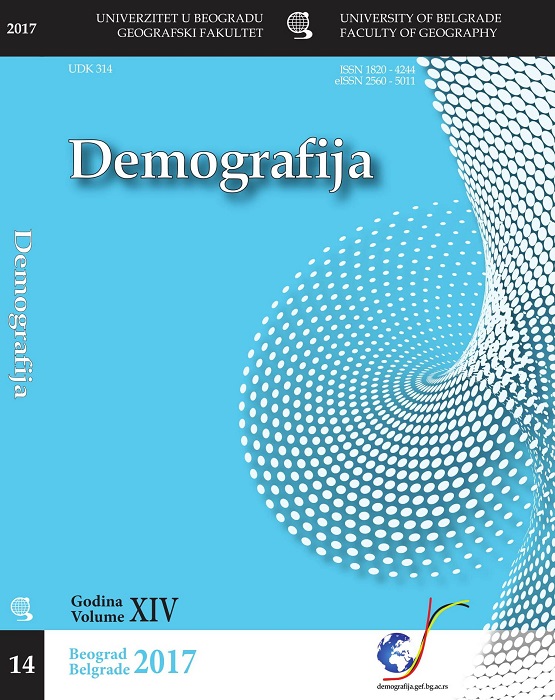Samoubistva u Srbiji: najzastupljeniji načini izvršenja
Suicide in Serbia: Most Common Methods
Author(s): Goran D. Penev, Biljana B. StankovićSubject(s): Social Sciences, Geography, Regional studies, Sociology, Social development, Social differentiation, Demography and human biology, Human Ecology, Victimology
Published by: Географски факултет, Универзитет у Београду
Keywords: methods of suicide;age;sex;gender differences;suicide prevention;
Summary/Abstract: The method of suicide is an important determinant of the outcome of suicidal behavior, and the reduction of the availability of the most frequently used methods has significant preventive potential. This paper analyzes the dynamics of the total number of suicides in Serbia according to method used in the period of 1990-2014, with an emphasis on structural differences by sex and age. The relative participation of certain age groups in the most commonly used suicide methods is indicated based on the calculated values of the relative risk referred to as the age ratio of method of suicide (ARMS). The analysis is based on the data of the Statistical Office of the Republic of Serbia, mostly unpublished. The results of the analysis show that in Serbia, in the period of 1990-2014, hanging was the most commonly used suicide method (61%). The next in number, but with a significantly smaller share, were suicides by a firearm (13%) and poisoning (8%).The biggest changes were registered with regard to the increase in firearm suicides, which was clearly connected to the beginning of the wars in former Yugoslavia in the early 1990s, but continued during the 2000s. Among men, the three above-mentioned methods were higher (85%), while the most prevalent methods among women were hanging (59%), poisoning (16%) and drowning (8%). Observed by age, the elderly (60+) are the most numerous, regardless of suicide method. The existing differences all relate to the share of certain age groups in the number of suicides by a particular method. There was a significant difference in the relative participation of large age groups in certain methods of suicide. The changes in this respect have been in the direction of reducing existing differences. The presented results may be useful to researchers and professionals of various profiles dealing with the phenomenon of suicide, as well as policy makers in the planning of measures and actions for suicide prevention.
Journal: Demografija
- Issue Year: 2017
- Issue No: 14
- Page Range: 13-45
- Page Count: 33
- Language: Serbian

